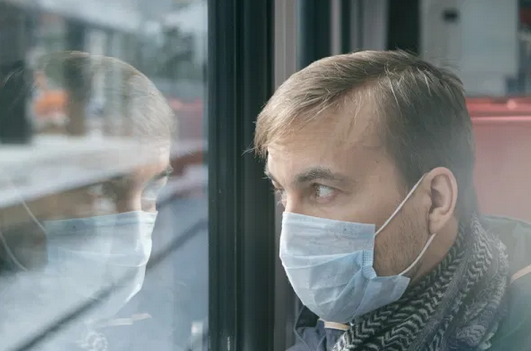In Switzerland, over the three months following 31 May 2020, there have been 11,306 recorded cases of Covid-19 and 91 deaths, a case fatality rate (CFR) of 0.8%. However, up to this date there were 30,862 cases and 1,920 deaths, a CFR of 6.2%. Why has Switzerland’s CFR fallen so steeply?
A number of factors could explain the decline.
Testing
The first is testing. Recorded case numbers before 1 June 2020 are not comparable to those since then. The positivity rate – the percentage of tests coming back positive – went as high as 18.5% before 1 June 2020. Since then positivity has not been above 3.5%.
Positivity provides an indication of how many cases might be slipping through the net. If it is high more cases are probably being missed. Based on Switzerland’s steep decline in positivity it is reasonable to assume that more actual cases are missing from the recorded case number before 1 June 2020 than the one since then.
Positivity is only one indicator of how many of the total infections being picked up. Another is the volume of tests. Before 1 June 2020, around 400,000 SARS-CoV-2 tests were conducted in Switzerland. Since then, more than 620,000 tests have been conducted. More testing and lower positivity support the hypothesis that more mild cases have being picked up recently, which is in turn driving down the CFR as recorded case numbers better reflect reality.
Age profile
Another factor is the shifting age profile of those catching it. Because the co-morbidities that make SARS-CoV-2 lethal correlate with age, the older population is more at risk.
So far a relatively low percentage of overall infections in Switzerland have been among older vulnerable people. This is one reason why Switzerland has experienced a relatively low death rate from the virus when compared to some other European nations.
For example, in Belgium, where 32% of total recorded cases so far have been among those 70 or older, the case fatality rate (CFR) is high (12%). In Switzerland, where a relatively lower 18% of recorded Covid-19 cases so far have been among this age group, the CFR is significantly lower (5%).
Since 31 May 2020, infections in Switzerland have shifted further towards younger people. Up until this date, people 70 and over made up 23% of all recorded cases. Since 31 May 2020, this older age group has accounted for around 4% of Switzerland’s new recorded cases, a significant drop of 19 percentage points or 83%.
People 70 and over make up 14% of Switzerland’s population, so at 4% of recently recorded Covid-19 cases, this older age group has been significantly underrepresented in the nation’s case numbers since 31 May 2020.
Masks (and other spread-reducing measures)
Avoiding the virus completely can be challenging. However, getting infected with less of it appears to reduce the severity of the disease. A growing body of research suggests that there could be a significant difference between getting just enough of the virus to test positive and receiving a large viral load.
After the virus infects its host it enters cells and replicates. The immune system springs into action and goes into battle with the rapidly multiplying invaders. If an infection starts with more viral particles it stands to reason that the immune system has more to deal with, which could lead to more severe symptoms.
In one experiment run as part of a vaccine development programme, healthy human volunteers exposed to different doses of an influenza virus developed more severe symptoms at higher doses.
It seems that masks reduce the inoculum or dose of the virus, and this could lead to more mild and asymptomatic cases. One study shows that hamsters are less likely to develop a SARS-CoV-2 infection when exposed through a mask. And those hamsters that do contract COVID-19 with masking in place have milder symptoms.
In addition, higher rates of asymptomatic and mild Covid-19 infection have been seen where population-level masking has been adopted. For example, the rate of asymptomatic SARS-CoV-2 infection was around 20% in an early COVID-19 outbreak on the Diamond Princess cruise ship. In a more recent outbreak on a different cruise ship, all passengers were given surgical masks and all staff wore N95 masks after COVID-19 was detected on board. In this second case, rather than 20% of those infected remaining asymptomatic, 81% did, a more than 4-fold shift in the percentage of cases experiencing no symptoms.
All of this suggests that testing, wearing masks, and keeping infection rates low among vulnerable groups could reduce death rates substantially. Even instances where masks fail to prevent infection, by reducing the dose, they could still reduce the chance of ending up in hospital.
Full story here Are you the author? Previous post See more for Next postTags: Coronavirus Switzerland,Covid-19 Switzerland,Editor's Choice,Featured,Health,newsletter,SARS-CoV-2 Switzerland



























